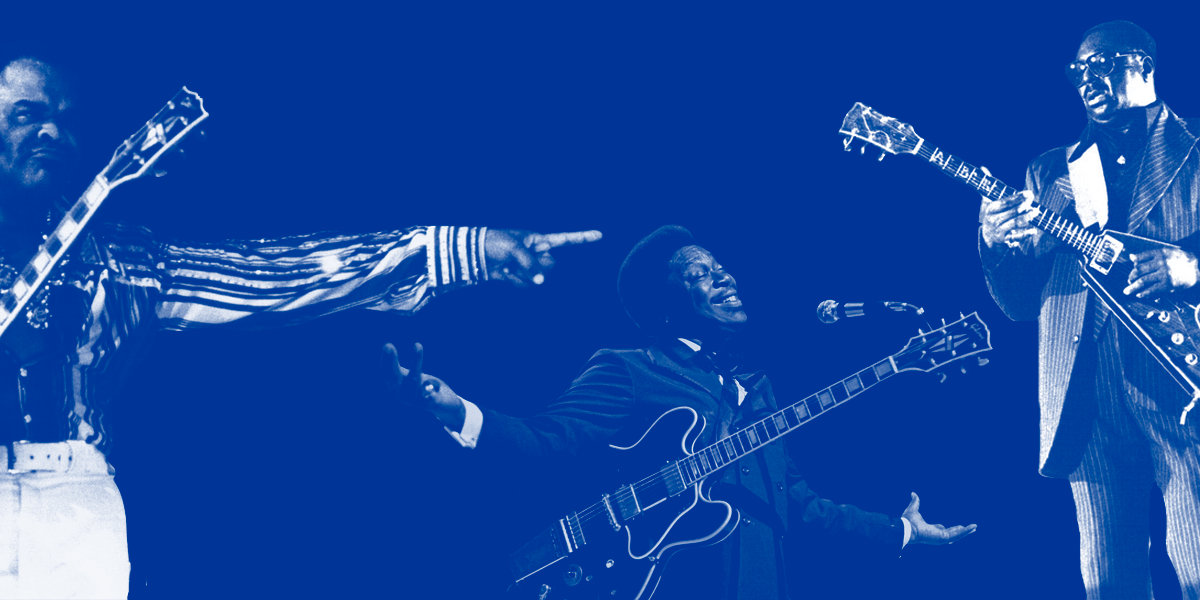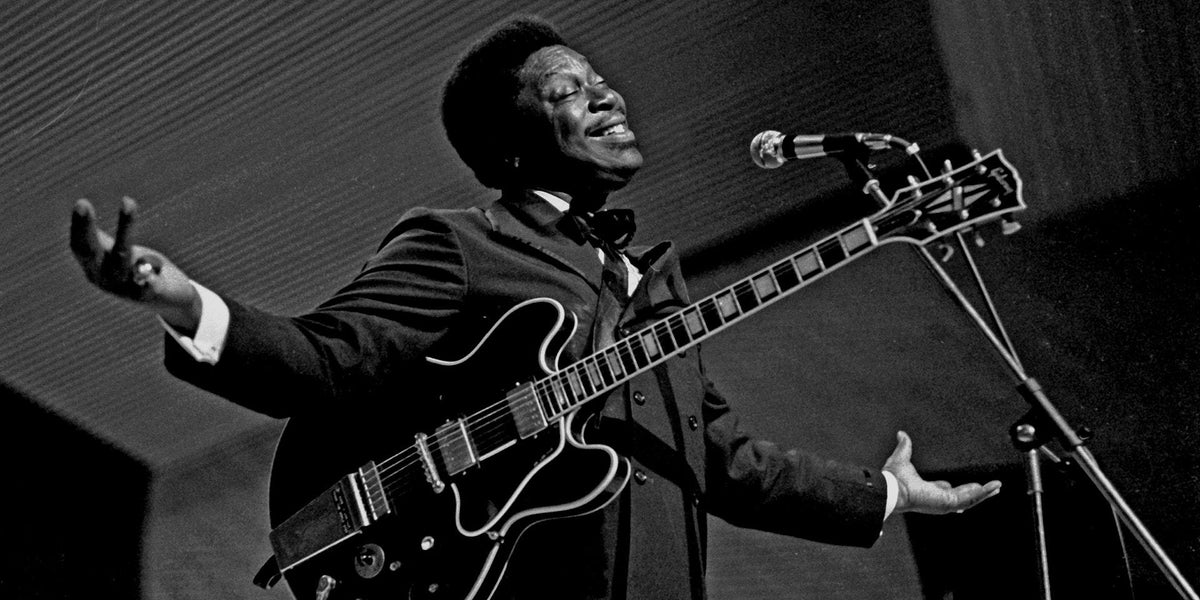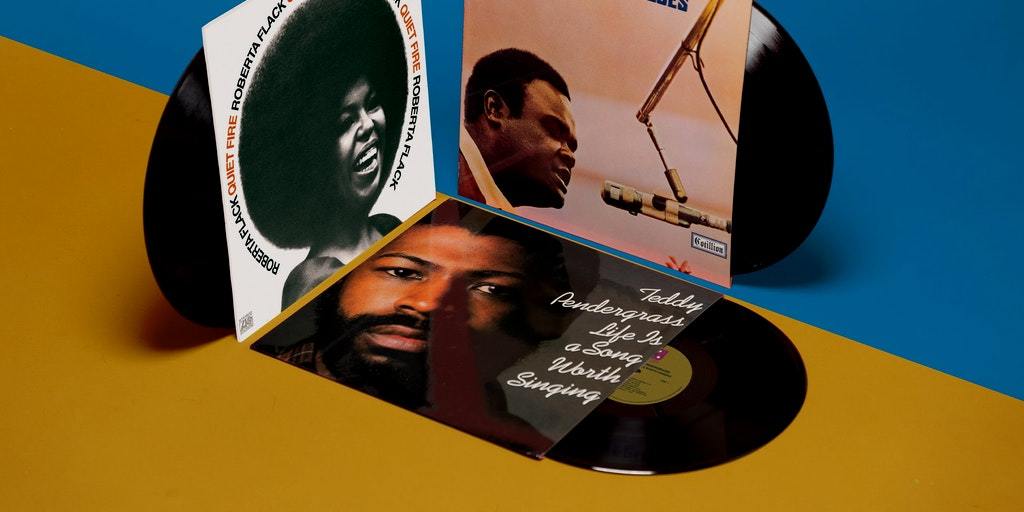Freddie King Played an Eternal Game
How ‘My Feeling for the Blues’ started an echo across blues and rock for generations
Out of the Three "Kings" of the Blues, Freddie King is often mentioned behind Albert and B.B., the third wheel like Theodore, Moe or the guy who brought Christ myrrh. And that makes some sense: Freddie died young — at 42, of a combination of stomach ulcers and pancreatitis — and his recording career is the shortest of the Three Kings, mainly lasting the 15 years between 1960 and 1975, the year before his death. And while B.B. and Albert would have career-defining singles — “The Thrill is Gone” and “Born Under a Bad Sign,” respectively — Freddie’s hits were more diffuse; his biggest single, “Hide Away,” was released in the early days of rock ’n’ roll, and while it showcased his nimble fingers and ability to pick out complicated guitar lines, it didn’t really capture the fullness of what made Freddie, well, Freddie. Because Freddie King, perhaps more than his other sovereigns, was about a sound more than any specific song. That sound, a blending of the lightning-in-a-dry-field pyrotechnics of the Texas country blues with the el-train-in-a-blizzard thrust of Chicago blues, would spiral out from Freddie to inspire entire waves of white rock artists from Eric Clapton and Peter Green to Stevie Ray Vaughan and ZZ Top. While he was the last of the Three Kings to be inducted into the Rock and Roll Hall of Fame, the Texas Cannonball, as he was called, certainly belonged there.
But because pioneering a sound doesn’t necessarily translate to record sales, Freddie would spend most of his career hopping between record label heads who believed in him, who could hear his unique sound and think, “This guy deserves to ply his trade here,” and serve as something like his patrons, releasing his records and helping him provide loss leaders for his robust touring schedule. It would start with the early home of James Brown, King Records, and would end, mostly, with Leon Russell’s Shelter Records. But for a brief two-year period, during which he would release his best recordings — including My Feeling for the Blues — Freddie would be shepherded by a legendary saxophonist who made him one of the first signings to an Atlantic subsidiary, Cotillion, where he selected artists to record himself. King Curtis would serve as producer and arranger of Freddie’s greatest recordings, including his finest album-length statement, My Feeling for the Blues. It wouldn’t be any more of a hit than his other studio albums, but again, Freddie is about a sound, and the sound Freddie conjures up on My Feeling would echo out across blues and rock for generations to come. Record sales are a box score that don’t tell you the finer details of the game. The game Freddie King played here was eternal.
Though he made his name in Chicago, Freddie King was born in Gilmer, Texas, in 1934, and was taught the ins and outs of guitar from his mom and his uncle. He’d move to Chicago as a teen when, like many other Black families from the South, his relatives uprooted to find union jobs in a bigger Northern city and took Freddie with them. While he’d come to fame as part of the new generation of Chicago blues players forming in Muddy Waters' and Howlin’ Wolf’s wake, it was his time in Texas that would have the most tangible impact on his guitar playing, his sound. Where B.B. was known to make his guitar cry by bending notes at his will, and Albert hammered on his guitar like it had wronged him gravely, Freddie’s technique — finger picking and strumming hard at the same time — has its roots in Texas country and western swing and the fleeter Texas blues. Western swing is probably the most secretly impactful music we never talk about — name any 20th century artist with roots in Texas, and they grew up on the stuff — and you can hear the clipped lines and flutter of that regional music in Freddie’s guitar riffs. Freddie’s sound was eventually influenced by rock ’n’ roll, but you could always tell it was him on record: He shoots out of your speakers like a ’57 Cadillac screaming across the Texas oil flats. Once he arrived in Chicago, he’d add the blues flourishes of Muddy Waters and Howlin’ Wolf — with whom he routinely gigged starting in his late teens — and eventually make a name for himself in Chicago's South Side blues scene. It’s here where I’m obligated to mention Freddie’s unique way of holding his guitar, the strap dangling off his right shoulder like a mailman carrying a mailbag. Nonchalant in its carelessness and so cool in its effortlessness. It’s a sight to behold in nearly every live video of Freddie.
Freddie’s time rising up the ranks in Chicago didn’t lead to a deal with local powerhouse Chess Records, however: The Chess brothers thought Freddie was destined to never sell, didn’t think that he had the talent necessary to be signed to their roster. He could occasionally book session work but never anything under his own name (which echoes how the Chess brothers handled Buddy Guy in the ’60s — they ostensibly signed Buddy but just never put out any records by him). Freddie recorded his first single, “Country Boy” b/w “That’s What You Think,” for a tiny local label, which didn’t sell but did feature an electric bass before it was en vogue for all blues bands to have someone pick the bass electrically.
In 1960, King Records, fresh off success with James Brown, opened a Chicago office and, upon hearing that Freddie was repeatedly passed on by Chess, saw an opportunity to stick it to their rivals and signed him. He hit the label’s studio in Cincinnati, and among the songs he cut was “Hide Away” — dedicated to the Chicago bar Mel’s Hideaway — which would be far and away his biggest hit, climbing to No. 29 on the pop charts. The rollicking instrumental would later be covered by Eric Clapton during his stint in John Mayall and the Bluesbreakers, which gave Freddie some notoriety amongst the rock ’n’ roll set and influenced basically every British rock guitarist of the mid-’60s. Freddie made seven LPs with King and the label’s subsidiary Federal between 1961 and 1965. At the beginning of 1966, King declined to renew Freddie’s recording contract, however, as his sales never again hit the peak of “Hide Away,” leading to the axeman relocating his wife and six kids to Dallas to be closer to home. He’d still tour the blues circuit, but 10 years into his professional career, he more or less thought his time as a recording artist might be finished, especially with R&B and soul dominating the airwaves.
A man instrumental (pun intended) in the sound of R&B and soul on Atlantic Records thought otherwise. Formed in 1968, Cotillion was an imprint under Atlantic, which, at least in its first few years until King Curtis’ death in 1971, served as the home of blues, soul and R&B artists who might not be big enough for the full Atlantic push but who still could make interesting albums in their own right. Curtis was fresh off playing sax on “Respect” and serving as Aretha’s musical director for live shows, and was a central figure in Atlantic building its soul sound in the late ’60s, so he was given free rein to sign and produce a variety of artists. The first LP to come out on Cotillion was by R&B crooner Brook Benton, and the third was Freddie’s eighth LP, Freddie King is a Blues Master. When King Curtis came calling, Freddie had been out of the recording studio for three years. But Curtis came upon a sound that captured Freddie’s talents better than any producer would before or after. Instead of leaning away from R&B and soul, Curtis paired Freddie with members of his own band, The Kingpins, who gave Freddie a sonic landscape to drive his guitar like an ATV, blasting over hills, through drum breaks and mowing down cacti. The rock-solid horn section and the pliant basslines provided firm bedrock for Freddie to be Freddie. But Blues Master plays like a tentative first step; Curtis recorded Freddie’s guitar a bit too high in the mix, and Freddie’s voice sometimes gets washed out in the saxes and horns.
By the next year, however, for the recording of My Feeling for the Blues, Freddie, King Curtis and The Kingpins were in lockstep, allowing Freddie to finally realize his destiny as the Third King of the Blues and ensconce himself as the missing link between Muddy Waters and Buddy Guy. My Feeling starts with a cover of Elmore James’ “Look On Yonder Wall” (shortened here to “Yonder Wall”), which Freddie sprays his Texas Cannonball shrapnel all over, from the machine gun solos to the interlocking grooves with the heavy horn section. King updates the lyrics to reference the war in Vietnam amid the tale of bailing on a romantic dalliance due to a paramore’s lover arriving home, atop a groove laid down by the band so thick you could float in it. King’s “Yonder Wall” would become the version aped by future players like Stevie Ray Vaughan and a staple of the legend-making international tours he’d undertake in the early ’70s (some footage of which is viewable on YouTube).
The other 10 songs alternate between upbeat ramblers and downtrodden, wide-eyed ballads, all buoyed by King’s emphatic and emotional playing. “Stumble” blasts off like an update to “Hide Away,” an instrumental that delays a monster Freddie solo to its final third as he smashes into the song’s stomp like a surprise guest at his own party. A cover of Texas blues legend T-Bone Walker’s “Stormy Monday” crawls slowly through its message that Tuesdays suck as bad as Mondays, and “Ain’t Nobody’s Business What We Do” could serve as a Freddie King highlight reel for his howling vocal performance and the number of solos he stomps out. “Woke Up This Morning” shoots out of your speakers like a firehose run amok, while “The Things I Used to Do” shows Freddie could do the down-home country blues of Muddy Waters with the best of them. By the time he gets to the mission-statement title track, you don’t need a guide to know much more about Freddie’s blues: he’s laid them all down on the line throughout My Feeling for the Blues.
Like most other blues albums released in 1970, My Feeling didn’t chart and neither did any of its singles. King left Cotillion the next year, signing to Leon Russell’s Shelter Records for three LPs (including 1972’s superlative The Texas Cannonball). His last album was released in 1975 on RSO (a label run by Bee Gees’ manager Robert Stigwood, another of Freddie’s label patrons), and in 1976, after years of touring 300 nights a year, King died of pancreatitis after cancelling a show in late 1976 complaining of stomach pains.
While his name might not be the first in the lineup of the Three Kings of the Blues, Freddie King’s feeling for the blues deserves more recognition, more love, and more attention. May this reissue serve as an opportunity for you, and for all of us, to give him his flowers.
Andrew Winistorfer is Senior Director of Music and Editorial at Vinyl Me, Please, and a writer and editor of their books, 100 Albums You Need in Your Collection and The Best Record Stores in the United States. He’s written Listening Notes for more than 30 VMP releases, co-produced multiple VMP Anthologies, and executive produced the VMP Anthologies The Story of Vanguard, The Story of Willie Nelson, Miles Davis: The Electric Years and The Story of Waylon Jennings. He lives in Saint Paul, Minnesota.
Related Articles
Join the Club!
Join Now, Starting at $36Pages







